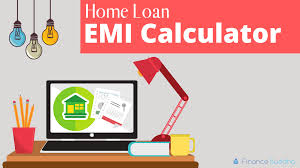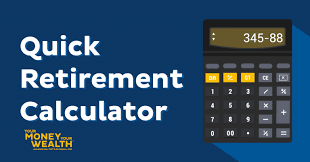Embark on your home buying journey with confidence by utilizing our top-rated financial tools, including the home loan calculator with down payment, the HL EMI calculator, and the house down payment calculator. These user-friendly resources will help you navigate the complexities of mortgage calculations, enabling you to make informed decisions and achieve the dream of homeownership with ease.
Mobile Loan Calculator
Amortization Schedule
| Month | Balance | Payment | Principal | Interest | New Balance |
|---|
Home Loan Calculator With Down Payment – HL EMI Calculator – House Down Payment Calculator
What is a Home Loan?
A home loan, also known as a mortgage, is a type of loan that is used to purchase or refinance a property. With a home loan, the borrower agrees to pay back the amount borrowed plus interest over a set period of time, typically 15 to 30 years. Home loans are typically secured loans, meaning that the property being purchased serves as collateral for the loan. This gives the lender some security in the event that the borrower defaults on the loan.
There are several different types of home loans available, including fixed-rate loans, variable-rate loans, interest-only loans, and low deposit loans. Each of these types of loans has its own unique features and benefits.
Why are Home Loans Important?
Home loans are important for several reasons. For most people, buying a home is one of the biggest purchases they’ll ever make, and a home loan allows them to spread out the cost of the home over a longer period of time. This can make the home more affordable, especially for first-time homebuyers who may not have a large amount of cash on hand to purchase a property outright.
In addition to making a home more affordable, home loans can also have tax benefits. In many countries, the interest paid on a home loan is tax-deductible, which can help to reduce the overall cost of the loan. Home loans can also provide borrowers with a sense of stability and security, as they are able to build equity in their property over time.
How to Get a Home Loan?
Getting a home loan can be a complex process, but it doesn’t have to be overwhelming. The first step in getting a home loan is to assess your eligibility. Lenders will look at a variety of factors, such as your income, credit score, and debt-to-income ratio, to determine whether or not you are a good candidate for a home loan.
Once you’ve determined that you are eligible for a home loan, the next step is to find the right lender. There are many different lenders that offer home loans, including banks, credit unions, and online lenders. It’s important to do your research and compare rates and terms from different lenders to find the best option for your needs.
Once you’ve found a lender that you’re comfortable with, the next step is to submit your application. This typically involves providing detailed information about your income, assets, and employment history, as well as any other relevant details about the property you’re purchasing. Your lender will then review your application and let you know whether or not you’ve been approved for a home loan.
Types of Home Loans
Fixed Rate Home Loans
A fixed rate home loan is a type of mortgage in which the interest rate remains constant for the entire duration of the loan. This means that the monthly repayments will remain the same for the duration of the loan, regardless of any changes in market interest rates.
Fixed rate home loans provide certainty and stability for borrowers, as they know exactly how much their monthly repayments will be. This can be particularly helpful for borrowers who have a tight budget or are worried about rising interest rates.
However, fixed rate home loans often have higher interest rates compared to variable rate home loans. This is because the lender takes on the risk of interest rate fluctuations over the long term. Fixed rate home loans can also have limited flexibility, as they may have restrictions on additional repayments or redraw facilities.
Variable Rate Home Loans
A variable rate home loan is a type of mortgage in which the interest rate can fluctuate throughout the life of the loan, depending on changes in market interest rates. This means that the monthly repayments can also change, which can make budgeting more challenging for borrowers.
Variable rate home loans can provide flexibility for borrowers, as they often offer more features such as redraw facilities and the ability to make additional repayments without penalty. Borrowers can also benefit from lower interest rates if the market rates decrease.
However, variable rate home loans also come with risks. If market interest rates rise, borrowers may experience an increase in their monthly repayments, which can put a strain on their budget.
Interest Only Home Loans
Interest only home loans are a type of mortgage in which the borrower only pays the interest component of the loan for a specified period, usually between 1 to 5 years. This means that the principal amount borrowed does not decrease during this period.
Interest only home loans can be beneficial for borrowers who need to free up cash flow in the short term, as the monthly repayments will be lower compared to a principal and interest loan. This can be useful for investors who are using the property for rental income or for those who are renovating the property before selling it.
However, interest only home loans come with risks. After the interest-only period ends, the monthly repayments will increase as the borrower will need to start paying off the principal amount borrowed. This can be a significant increase in monthly repayments, which can cause financial stress for borrowers.
Low Deposit Home Loans
Low deposit home loans are a type of mortgage designed for borrowers who have a smaller deposit to put towards their home. The standard deposit required for a home loan is typically 20% of the property’s value. However, low deposit home loans can allow borrowers to obtain a loan with a smaller deposit, sometimes as little as 5%.
Low deposit home loans can be beneficial for first home buyers or those who have struggled to save a large deposit. However, they often come with higher interest rates and fees compared to standard home loans. Additionally, borrowers who have a smaller deposit may be required to pay lenders mortgage insurance (LMI), which is an additional cost that protects the lender in case the borrower defaults on the loan.
Construction Loans
Construction loans are a type of mortgage that is used to finance the construction of a new home. Unlike other types of home loans, construction loans release funds in stages as the construction progresses.
The Home Loan Application Process
Applying for a home loan can be a daunting task, especially for first-time homebuyers. The process involves gathering financial documents, submitting an application, and working with a loan officer to finalize the loan. In this section, we’ll cover the step-by-step process of applying for a home loan and provide tips for borrowers to streamline the process and avoid common mistakes.
Review Your Credit Report Before applying for a home loan, it’s important to review your credit report to ensure that there are no errors or inaccuracies that could negatively impact your credit score. You can request a free credit report from each of the three major credit bureaus (Equifax, Experian, and TransUnion) once per year. If you find errors on your credit report, you should dispute them with the credit bureau.
Gather Financial Documents To apply for a home loan, you’ll need to provide financial documents to the lender. These typically include tax returns, bank statements, and pay stubs. Be sure to gather all necessary documents before submitting your application to avoid delays in the approval process.
Submit Your Application Once you have gathered your financial documents, you can submit your home loan application. This typically involves filling out an online application or submitting a paper application to the lender. The application will ask for information about your income, assets, and debts, as well as the property you are planning to purchase.
Receive Pre-Approval After you submit your application, the lender will review your financial documents and determine whether you are pre-approved for a home loan. Pre-approval can help you determine your budget and shopping range before beginning the home search process. It’s important to note that pre-approval is not a guarantee of a loan, but rather an estimate of how much you may be able to borrow.
Work with a Loan Officer If you are pre-approved for a home loan, you will work with a loan officer to finalize the loan. The loan officer will ask for additional documentation, such as a copy of the sales contract, and will work with you to choose the best loan program for your needs.
Appraisal and Underwriting The lender will order an appraisal of the property to ensure that it is worth the amount of the loan. They will also perform underwriting, which involves verifying your income and assets and ensuring that you meet the lender’s eligibility requirements.
Closing Once the appraisal and underwriting are complete, you will schedule a closing date. At the closing, you will sign the final loan documents and pay closing costs, which may include fees for appraisal, title search, and loan origination. The lender will then fund the loan and you will become a homeowner.
Tips for a Smooth Home Loan Application Process:
- Review your credit report before applying for a loan to ensure that there are no errors or inaccuracies.
- Gather all necessary financial documents before submitting your application.
- Be prepared to provide additional documentation if requested by the lender.
- Be honest and accurate on your loan application.
- Keep communication lines open with your loan officer throughout the process.
- Understand the timeline of the application process and be patient, as it may take several weeks for the loan to be approved and funded.
The Role of Credit Scores in Home Loans
Credit scores are a critical factor that lenders consider when evaluating a borrower’s application for a home loan. A credit score is a three-digit number that ranges from 300 to 850, and it represents a borrower’s creditworthiness based on their credit history. The higher the credit score, the better the chances of getting approved for a loan with favorable terms.
There are two main types of credit scores that lenders use: FICO scores and VantageScores. FICO scores are the most commonly used credit scores, and they are calculated based on a borrower’s credit history, payment history, and other factors. VantageScores are a newer type of credit score that uses similar factors to calculate a borrower’s creditworthiness.
Credit scores can impact loan eligibility and interest rates. Lenders typically have a minimum credit score requirement for borrowers to be eligible for a home loan. The higher the credit score, the more likely a borrower is to qualify for a loan with lower interest rates and better terms. Conversely, a lower credit score can result in higher interest rates and more stringent loan requirements.
To improve their credit score, borrowers can take several steps. One of the most important steps is to review their credit report for errors and inaccuracies, which can negatively impact their score. Borrowers can also make timely payments on their existing debts, keep their credit utilization low, and avoid opening new credit accounts before applying for a home loan.
It’s important to note that even borrowers with lower credit scores can still qualify for a home loan. For example, FHA loans are designed for borrowers with lower credit scores and require a minimum credit score of 580. Additionally, there are other programs and options available for borrowers with less-than-perfect credit, such as a co-signer or a larger down payment.
In summary, credit scores are a critical factor that lenders consider when evaluating a borrower’s application for a home loan. Borrowers should understand how credit scores are calculated, how they impact loan eligibility and interest rates, and what steps they can take to improve their credit score before applying for a loan. Even borrowers with lower credit scores can still qualify for a home loan with the right program and guidance from a lender.
Understanding Home Loan Fees and Closing Costs
To begin with, home loan fees and closing costs are expenses that borrowers should expect to encounter when taking out a mortgage loan. These costs can vary depending on the lender, the type of loan, and the location of the property. Here are some of the fees and costs that borrowers can expect to encounter:
Origination fees: These are fees that are charged by the lender to process the loan application. Origination fees can vary, but they are usually a percentage of the loan amount. Borrowers should shop around to find lenders that offer lower origination fees.
Appraisal fees: Before approving a loan, lenders will require an appraisal to determine the value of the property. The cost of the appraisal can vary depending on the location of the property, but borrowers can expect to pay several hundred dollars for this service.
Title fees: These fees are charged by the title company to ensure that the property title is clear and that there are no liens or other issues that could impact the sale of the property. Title fees can vary depending on the location of the property, but they typically range from several hundred to several thousand dollars.
Closing costs: These are fees that are associated with the final steps of the home loan process, including the loan closing. Closing costs can include fees for a title search, credit report, and attorney fees, among others. Borrowers should be aware that closing costs can add up quickly and can range from several thousand to tens of thousands of dollars.
It’s important for borrowers to understand how these fees and costs are calculated and when they are due. Borrowers should also shop around to find lenders that offer lower fees and costs. Additionally, borrowers can negotiate with the lender to reduce some of the fees and costs associated with the loan.
Lastly, borrowers should also be aware of how closing costs impact the final cost of the loan. Closing costs are typically paid out of pocket by the borrower, and they can increase the amount of money that a borrower needs to bring to the closing table. It’s important for borrowers to factor in closing costs when determining their budget and shopping for a home loan.
Pros and Cons of Home Loans
Pros:
Helps you achieve your dream of owning a home: One of the biggest advantages of getting a home loan is that it allows you to buy a home, which might not have been possible without the loan. Owning a home gives you a sense of stability and security, and it also helps you build wealth over time.
Tax benefits: Home loan borrowers can avail of tax benefits under section 80C and 24B of the Income Tax Act, 1961. The principal component of the loan repayment is eligible for a deduction of up to Rs 1.5 lakh, while the interest component is eligible for a deduction of up to Rs 2 lakh. This can significantly reduce your tax liability.
Low-interest rates: Home loans generally have lower interest rates compared to other forms of credit, such as personal loans or credit cards. This is because the loan is secured by the property, which reduces the lender’s risk.
EMI option: Home loans allow you to repay the loan in Equated Monthly Installments (EMIs), which makes it easier to manage your finances. The EMI comprises both the principal and interest component of the loan, which helps you plan your budget better.
Appreciation in property value: Over time, the value of your property is likely to appreciate, which means that your investment will grow. This can help you build wealth and provide financial security in the long run.
Cons:
High upfront costs: While a home loan can help you buy a home, it also comes with significant upfront costs, such as the down payment, processing fees, and stamp duty. These costs can add up to a substantial amount, which may make it difficult for some borrowers to afford.
Long-term commitment: A home loan is a long-term commitment, with most loans spanning over 10-20 years. This means that you will be required to make regular EMI payments over a significant period, which may impact your cash flow and financial flexibility.
Risk of default: If you default on your home loan, the lender can repossess your property, which can be a significant financial loss. It is, therefore, essential to ensure that you are able to manage the loan repayments comfortably.
Interest rate risk: While home loan interest rates are generally lower than other forms of credit, they are subject to fluctuations based on market conditions. This means that your loan repayments can increase in the future, which can impact your budget and financial planning.
Property market risk: The value of your property is subject to market fluctuations and can be impacted by factors such as location, infrastructure development, and economic conditions. This means that the value of your investment may not appreciate as expected, or may even depreciate, which can impact your overall financial plan.
FAQ
What is a home loan?
A. home loan is a type of loan that is taken out to purchase or build a property, usually a residential property. The loan is secured against the property, which means that the lender can take possession of the property if the borrower defaults on the loan.
How much can I borrow for a home loan?
A.The amount you can borrow for a home loan depends on a variety of factors, including your income, credit score, and the value of the property you are purchasing. Generally, most lenders will allow you to borrow up to 80% of the property value.
What is the interest rate for a home loan?
A.The interest rate for a home loan varies depending on the lender and the type of loan you are applying for. It can also vary depending on factors such as your credit score, income, and the amount of the loan. It is important to shop around and compare rates from different lenders before choosing a home loan.
How long does it take to get approved for a home loan?
A.The time it takes to get approved for a home loan can vary depending on the lender and the complexity of your financial situation. It can take anywhere from a few days to several weeks to get approved for a home loan.
What is a fixed-rate home loan?
A.fixed-rate home loan is a type of home loan where the interest rate is fixed for a set period of time, usually between one and five years. This means that your repayments will remain the same for the duration of the fixed-rate period, making it easier to budget and plan your finances.
What is a variable-rate home loan?
A. variable-rate home loan is a type of home loan where the interest rate can fluctuate over time. This means that your repayments can go up or down depending on changes in the interest rate.
What is a redraw facility?
A. redraw facility is a feature offered by some lenders that allows you to withdraw any extra repayments you have made on your home loan. This can be a useful way to access funds for emergencies or unexpected expenses.
Can I pay off my home loan early?
A.Yes, you can usually pay off your home loan early without incurring any penalties. This can be a good way to save money on interest and reduce the overall cost of your loan.
What is Lenders Mortgage Insurance (LMI)?
A.Lenders Mortgage Insurance (LMI) is a type of insurance that is required by lenders when you are borrowing more than 80% of the property value. It protects the lender in case you default on the loan and the property needs to be sold.
Can I switch lenders for my home loan?
A.Yes, you can switch lenders for your home loan. This is known as refinancing and can be a good way to save money on interest and get better loan features. However, it is important to carefully consider the costs and benefits of refinancing before making a decision.
Important Points
Loan fees and charges: When taking out a home loan, it’s important to be aware of any fees and charges that may be associated with the loan. These can include application fees, ongoing fees, and early repayment fees. Make sure you read the fine print and understand all of the costs involved before committing to a loan.
Loan features: Different home loans come with different features, such as offset accounts, redraw facilities, and the ability to make extra repayments. Consider which features are important to you and which ones you can do without.
Repayment options: Most home loans offer a range of repayment options, such as weekly, fortnightly, or monthly. Consider which repayment frequency will work best for your budget and lifestyle.
Insurance: It’s important to consider insurance when taking out a home loan. This can include building and contents insurance, as well as income protection and life insurance. Make sure you understand what insurance you need and how much it will cost.
Interest rates: The interest rate on your home loan will have a big impact on the overall cost of the loan. Make sure you understand the different types of interest rates, such as fixed and variable, and compare rates from different lenders to find the best deal.
Eligibility requirements: Before applying for a home loan, it’s important to understand the eligibility requirements. This can include factors such as income, credit score, and employment status. Make sure you meet the requirements before applying for a loan.
Budgeting: Taking out a home loan is a big financial commitment, so it’s important to have a solid budget in place. Consider all of your income and expenses, including the cost of the loan repayments, and make sure you can afford the repayments before committing to a loan.
Seeking professional advice: If you’re unsure about any aspect of taking out a home loan, it’s a good idea to seek professional advice. This could include speaking to a financial advisor, mortgage broker, or real estate agent who can help guide you through the process.

Unraveling the Mystery of Home Loan Calculations: Benefits and Usage of Top Calculators
Purchasing a home is a significant financial decision that requires careful planning and evaluation. To make this process simpler and more transparent, various online tools can assist you in understanding your mortgage options. In this article, we will delve into the usage and benefits of three powerful tools: the home loan calculator with down payment, the HL EMI calculator, and the house down payment calculator.
Home Loan Calculator with Down Payment: Taking the Guesswork Out of Mortgage Calculations
The home loan calculator with down payment is a valuable tool that can help you determine the mortgage amount you can afford based on your desired down payment. By inputting the purchase price, down payment percentage, interest rate, and loan term, this calculator will provide you with an estimate of your monthly mortgage payment and the total cost of the loan.
Benefits:
- Ease of use: With an intuitive interface, this calculator simplifies the process of estimating your mortgage costs.
- Customization: You can experiment with different down payment percentages, interest rates, and loan terms to find the best fit for your budget.
- Informed decision-making: By understanding the impact of various factors on your mortgage, you can make better decisions about your home purchase.
HL EMI Calculator: Simplifying Your Home Loan EMI Calculations
The HL EMI calculator is designed to help you calculate your monthly Equated Monthly Instalments (EMI) for your home loan. By entering the principal loan amount, interest rate, and loan tenure, this calculator will display your monthly EMI and the total interest payable over the loan period.
Benefits:
- Time-saving: An HL EMI calculator allows you to quickly determine your monthly EMI without manually calculating the complicated formulas.
- Budget planning: By knowing your monthly EMI, you can plan your budget effectively and avoid financial stress.
- Loan comparison: Experimenting with different loan terms and interest rates can help you choose the most favorable loan offer.
House Down Payment Calculator: Estimating Your Initial Investment
A house down payment calculator is a useful tool for determining the amount of money you need to save for your initial home purchase investment. By inputting the home’s purchase price and your desired down payment percentage, this calculator will show you the required down payment amount.
Benefits:
- Financial planning: This calculator helps you set a realistic savings goal for your home down payment.
- Affordability assessment: By understanding the required down payment, you can assess if a particular home is within your financial reach.
- Flexibility: Experiment with different down payment percentages to see how it affects your overall mortgage cost.
Conclusion
Understanding your mortgage options is essential for making an informed decision when purchasing a home. The home loan calculator with down payment, HL EMI calculator, and house down payment calculator are powerful tools that can simplify this process by providing you with accurate estimates and customized results. By using these calculators, you can confidently navigate the home buying process and make the best financial choices for your unique situation.
Home Loan Calculator With Down Payment – HL EMI Calculator – House Down Payment Calculator
Legal Notices and Disclaimer
All Information contained in and produced by the ModernCalculators.com is provided for educational purposes only. This information should not be used for any Financial planning etc. Take the help from Financial experts for any Finace related Topics. This Website will not be responsible for any Financial loss etc.





